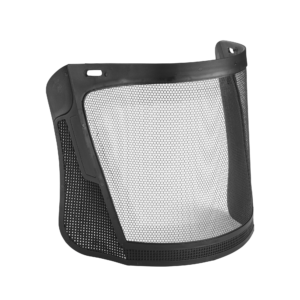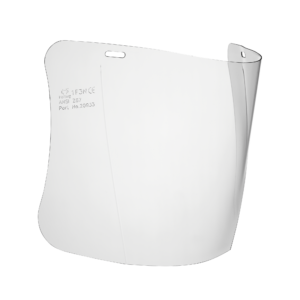When it comes to personal protective equipment, comfort often takes a backseat to compliance. But for professionals who wear hard hats for hours at a time, comfort isn’t just a luxury — it’s essential.
An uncomfortable helmet can lead to fatigue, poor posture, and even reduced compliance on site. On the other hand, a well-designed, well-fitted hard hat can improve both safety and productivity throughout the day.
Why Comfort Matters
Wearing a hard hat for a few minutes is one thing — wearing one for an entire shift is something else entirely. That’s why more professionals are prioritising comfort alongside safety.
A comfortable hard hat can reduce strain on the neck, help regulate temperature, and minimise the distractions that come with poor fit or pressure points. Over time, this leads to better focus, fewer adjustments during tasks, and a lower chance of removing the helmet when it’s needed most.
What to Look For
When choosing a more wearable hard hat, several features stand out:
-
Lightweight design: Reduces neck and shoulder fatigue, especially during long hours.
-
Effective ventilation: Keeps the head cool and dry, particularly in warm or enclosed environments.
-
Adjustable suspension: Allows for a customised fit, adapting to different head shapes and hairstyles.
-
Sweatbands and padding: Enhance comfort, absorb moisture, and help prevent skin irritation.
-
Balanced weight distribution: Ensures the helmet sits evenly without tilting forward or slipping.
These elements, combined, can make a surprising difference to how a hard hat feels by the end of the day.
The Modern Approach to Head Protection
Gone are the days when hard hats were stiff, heavy, and one-size-fits-all. Today’s helmets are designed with the user in mind, often borrowing from sports and climbing gear to improve ergonomics and breathability.
Many professionals now favour helmets that offer a close, secure fit with better movement and airflow. This is especially true in roles that involve climbing, confined spaces, or long periods on foot.
Features like dial-adjustable ratchets, textile suspension systems, and replaceable comfort liners have become more common — and for good reason. They make helmets more adaptable, not only for comfort but also for different types of work.
Vented vs. Non-Vented
Another factor to consider is ventilation. Some of the most comfortable models come in both vented and non-vented versions.
Vented helmets are ideal for warm conditions or high-activity roles, allowing heat to escape and air to circulate. However, for electrical work or where falling debris is a concern, non-vented versions may be more appropriate.
Having the option to choose — or switch between the two — can be a big advantage for teams working across varied environments.
Field Feedback
Many professionals who have made the switch to modern, comfort-focused helmets say the difference is immediate. Less pressure on the forehead, better fit with other PPE, and fewer headaches after long shifts are commonly reported.
Some also point to improved concentration and less fidgeting. When a helmet is designed to stay in place without constant adjustment, it becomes easier to forget it’s even there — which is exactly what you want.
A Smarter Investment
While high-comfort helmets often come with a higher upfront cost, the benefits tend to outweigh the price difference. Better user compliance, longer wear time without complaint, and fewer replacements due to discomfort or poor fit all contribute to long-term value.
Importantly, these helmets still meet all the relevant UK and international safety standards. So you’re not compromising protection — you’re enhancing it through smarter design.
Hard Hat Recommendations
If you’re in the market for a comfort-first helmet that doesn’t compromise on protection, here are a few standout options that have gained a solid reputation for wearability:
Petzl Vertex Vent
This helmet combines the lightweight feel of a climbing-style design with a robust industrial-grade shell. The six-point textile suspension system moulds to the head for even weight distribution, while sliding shutters on the side allow adjustable airflow. It’s especially well-suited to high-movement roles, such as working at height, where comfort and stability are essential.
MSA V-Gard H1 Safety Helmet
Designed with versatility and comfort in mind, the V-Gard H1 features a low-profile, balanced fit, plus a moisture-wicking liner to reduce sweat build-up. Its pivoting ratchet system allows quick, one-handed adjustment — even with gloves on. With vented and non-vented options available, it’s suitable for a wide range of job types and environments.
MSA V-Gard 520 Hard Hat
For those who prefer a more traditional shape but still want enhanced comfort, the V-Gard 520 is a dependable option. It offers a lightweight shell, a comfortable 4-point Fas-Trac® suspension, and a breathable sweatband as standard. The helmet is also dielectric, making it suitable for electrical environments. Simple, reliable, and widely used across many sectors in the UK.
Final Thoughts
If you or your team wear helmets every day, it’s worth taking the time to find one that fits well, breathes easily, and feels balanced. The difference in comfort can lead to noticeable improvements in morale, focus, and safety on site.
Whether you’re in construction, telecoms, utilities, or any environment where head protection is essential, upgrading to a more ergonomic hard hat is a small change that can have a big impact.



